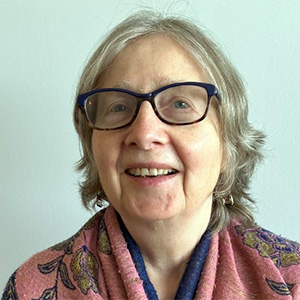Meet Robert Haltiwanger
When Robert Haltiwanger came to Duke University as a Ph.D. student, he was not only stepping into the field of glycobiology, he was also entering a realm where the American Society for Biochemistry and Molecular Biology was a force to be reckoned with.
His principal investigator, Robert Hill, had served on the editorial board of the ASBMB’s Journal of Biological Chemistry since 1965 and was elected president of the society in 1976.
“I was kind of raised in the society, and JBC was the prime target for most of our publications,” Haltiwanger said. “I went to my first ASBMB meeting in 1982; it made me really want to be in the field.”
Haltiwanger moved from one ASBMB glycobiology lab to another when he did his postdoc with Gerald Hart at the Johns Hopkins University School of Medicine. Hart was also an editorial board member for JBC at the time and “his lab also was deeply embedded in the society,” Haltiwanger said.
So, when he launched his own research career at Stony Brook University in 1992, Haltiwanger was already an ASBMB member, and he began serving on the JBC editorial board in 1999. He became a full professor in 2004 and chaired the Stony Brook biochemistry and cell biology department from 2009 to 2015.
Haltiwanger accepted a new job as a professor at the University of Georgia in 2015. Hart joined him there in 2018, the same year Hart was elected ASBMB president. Two years later, Haltiwanger became co-director of the university’s T32-funded doctoral glycoscience training program.
After giving talks at four ASBMB annual meetings, starting in 2001, Haltiwanger was named a co-chair of the society’s 2020 meeting, set to take place in San Diego, but canceled by the COVID-19 pandemic. He ended up co-chairing the 2021 meeting, which was held virtually.
Haltiwanger became a JBC associate editor in 2022, and he was named an ASBMB fellow this year. He spoke with ASBMB Today about his research career and his history with the JBC. The interview has been edited for clarity and length.
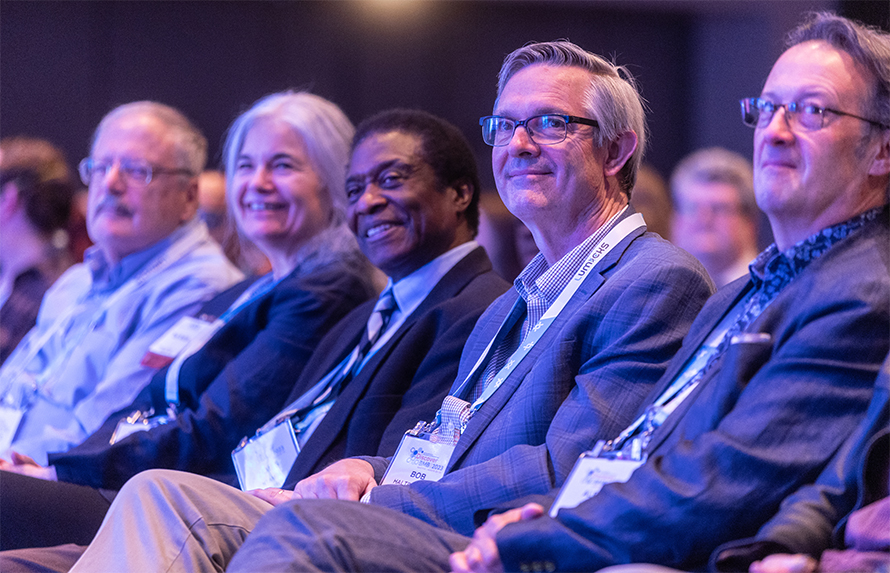
What’s your core interest in biochemical research these days?
Haltiwanger: My main area is glycobiology. The root “glyco” is related to the Greek word for “sweet.” So in biology, my work is the study of the sweet life. It’s an understudied field because the analysis of a glycoprotein is technically complicated.
Mass spectrometry has been instrumental in understanding the structures of glycans. The glycans are what we call the sugar portion, the carbohydrate portion of a glycoprotein or glycolipid. These molecules tend to be on the cell surface: Every cell of your body has a sugar coat, called a glycocalyx.
People have known since the 1960s that there’s a sugar coat on all the cells, but nobody really knew what it was doing, other than having a protective function. It’s a physical barrier on the plasma membrane because the easiest way to kill a cell is to poke a hole in the plasma membrane and everything leaks out. Yet, the glycocalyx is made up of literally thousands of different carbohydrate structures, and hundreds of enzymes are responsible for synthesizing it. That suggests that there’s probably more to it than just a protective barrier.
We’re still discovering new carbohydrate modifications. Once you discover one, there’s going to be an enzyme, called a glycosyltransferase, that generates that modification. If you identify the enzyme and you get the gene for it, you can knock it out in a fruit fly or a mouse and look for human diseases caused by mutations in those genes. That’s what we do.
What did you learn while you were working at Duke University with Robert Hill?
Haltiwanger: The Hill lab worked on biochemical purifications of glycosyltransferases — and what are known as lectins, which are proteins that recognize specific carbohydrate structures. If there’s some biological function to a cell surface carbohydrate, there has to be something that recognizes it. A whole bunch of lectins have been identified that recognize different carbohydrate structures.
I purified what is now known as the mannose receptor. It’s involved in innate immunity. It recognizes surfaces of cells such as fungi, which are coated with mannose. A macrophage can recognize that, engulf it and then destroy it.
I was surrounded by people working on enzymes that make or recognize complex carbohydrates.
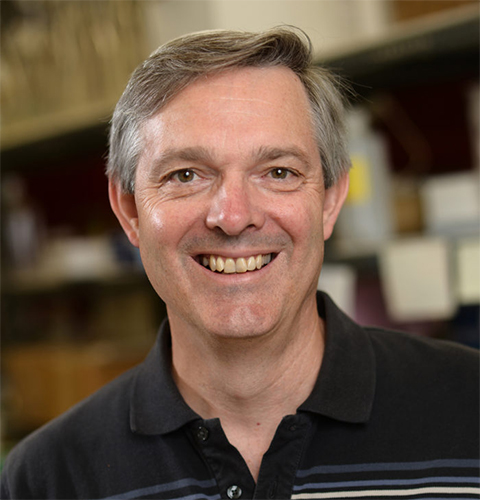
For your postdoc, you joined Gerald Hart’s lab. What were they working on?
Haltiwanger: When I joined the lab, they had just discovered a novel form of glycosylation, called O-GlcNAc.
Most glycoproteins are on the cell surface. However, O-GlcNAc was found on proteins inside the cell nucleus and cytoplasm, which at the time was a heresy in the field, because everybody thought there were no sugars or glycoproteins inside the cell. It was a radical thing to propose.
For the first few years I was in the lab, I would go to scientific meetings, and we would present posters about nuclear and cytoplasmic glycosylation. People would come up and say, “Don’t you know, there are no glycoproteins in the nucleus and the cytoplasm.”
We had really good data, but that was the dogma: There are no sugars or glycoproteins in the nucleus and cytoplasm.
So one lesson from that experience was ‘don't follow the crowd.’
Haltiwanger: Dogmas only stand until there’s data to refute them. That was definitely one of the things I took from my experience in Jerry’s lab.
Jerry is just passionate about complex carbohydrates. It’s really wonderful to be in the presence of somebody who was so excited about these molecules — anything that had a sugar on it. Since he moved to the University of Georgia, his lab is just down the hall from me.
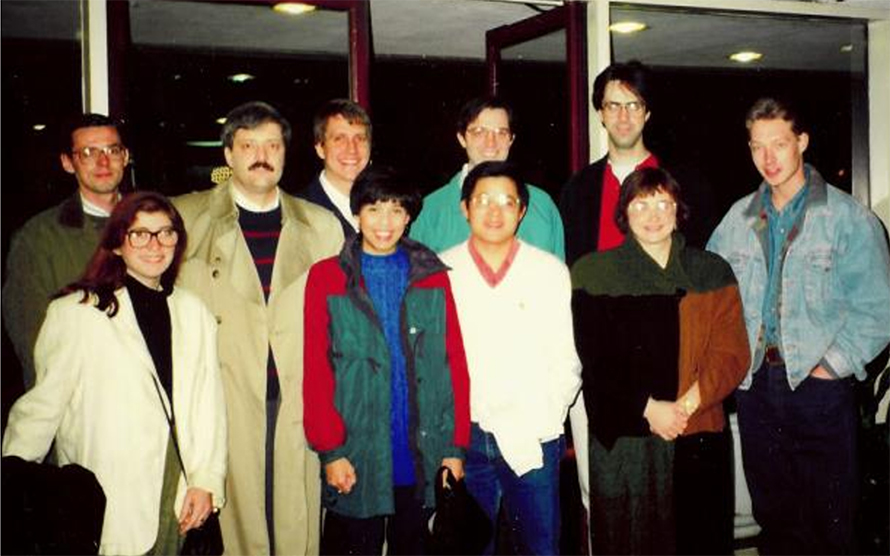
Looking back on your years of work at Stony Brook, what is most relevant to you now?
Haltiwanger: When I started my independent lab, I was interested in understanding O-glycans. Over time, we’ve probably identified or helped identify a dozen different carbohydrate modifications and the enzymes involved in generating those modifications.
When you identify an enzyme, you have to biochemically characterize it. How does this enzyme work? What are the substrates that it uses? You have to identify the gene that encodes that enzyme, and then you can start studying its biology. When studying a gene, you can eliminate it in various cells or organisms and look for phenotypes. We’ve done a lot of that, and a lot of that has been collaborative work.
We’ve worked mostly in mammalian systems. Just last spring, we identified another novel sugar modification on proteins and the enzymes that add the sugar. We continue to identify novel structures and the enzymes that form them. There are structures that we still don’t even know about. That’s what drives my interest in glycobiology: finding new things.
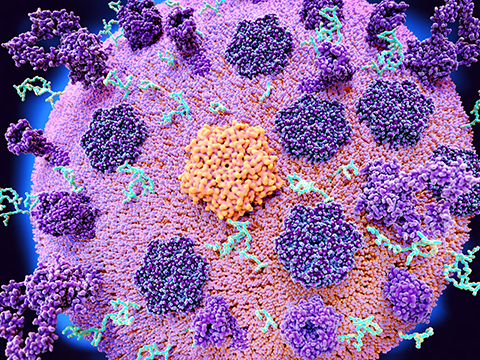
What drew you to the University of Georgia?
Haltiwanger: There’s a world-class center here called the Complex Carbohydrate Research Center. It’s almost a 140,000-square-foot building. There are about 20 research groups in here, and everybody works on glycobiology. Nowhere else on the planet has that concentration of researchers in this field.
I’ve known most of the people here for a large part of my career because I go to the same meetings and see them. They had tried to recruit me a couple of times, in the early 2000s. My wife and I met in North Carolina, and we always thought we’d probably move south again. I was the chair of the biochemistry department at Stony Brook for my last eight or nine years there. I was ready to not be a chair anymore, so it was time for a transition.
What have you been working on lately?
Haltiwanger: Fibrillin is a structural protein in the extracellular matrix. People think Abraham Lincoln had Marfan syndrome, a common genetic disorder that’s due to mutations in the fibrillins — fibrillin-1 in particular. It’s a biologically important protein.
We demonstrated in a 2022 JBC paper that fibrillin is covered with glucose; it has probably 25 or 30 glucose monosaccharides added to it all over its structure. After we identified the glucose modifications, we identified the enzymes, POGLUT 2 and 3, and we identified the genes that encode them. We then generated knockout mice that lack POGLUT 2 and 3. These mice die shortly after birth if you knock out both of these enzymes, so we now know they are essential to life.
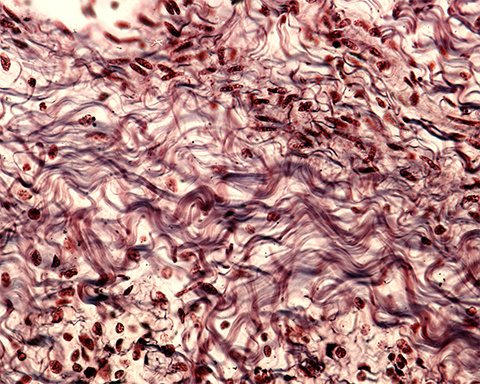
You had a first-author paper in JBC very early in your career. Talk about your involvement with academic publishing over the years.
Haltiwanger: I think I published four JBC papers as a graduate student, three of them as first author, on my lectin work. In Bob Hill’s lab, that was where everyone published: JBC. Very few of his papers were published in other journals. JBC was where you would publish if you had a good story to tell. I have now published 40-some papers in JBC.
In the early 2000s, I was on the editorial board for five or six years and continued to publish in JBC. It was awesome.
I also have a major involvement in the Society for Glycobiology, which is smaller than the ASBMB. It publishes the journal Glycobiology, which Jerry Hart started in 1989. He was its first editor until about 2001. I became editor in 2011 for 10 years, until 2020.
Jerry had been a JBC associate editor for about the same period, and he stepped down. He asked me: Would you be willing to take over? I agreed and came back to the JBC at the beginning of 2022 as an associate editor.
I’m very familiar with the journal. I’ve published most of my papers there. Even when I wasn’t on the editorial board, I probably reviewed several papers every year for JBC. It’s like my home.
How do you approach the editorial process?
Haltiwanger: My major responsibilities are glycobiology and extracellular matrices. To be honest, in those fields, and glycobiology in particular, most people have a very high opinion of JBC. It’s where they send their best papers.
The thing I look for immediately is whether there’s some mechanistic aspect of the work. Are they explaining biological mechanisms? Then I look at the manuscript to see what type of data they have, because, if they have X-ray crystallography, mass spectrometry, nuclear magnetic resonance or some specialized methodology, I need to make sure I assign it to an editorial board member who has that expertise and can evaluate it.
What do you do to recharge your batteries?
Haltiwanger: I like hiking and long walks in shaded areas. There’s a botanical garden that has miles of hiking trails five minutes from the lab. I can go over there, and eat my lunch and then go for a walk for half an hour. It gets my mind off all of the questions that I was trying to wrestle with in the lab.
Robert Haltiwanger, second from right, enjoys a presentation at Discover BMB, the 2023 ASBMB meeting in Seattle with, from left, Gerald Hart, a University of Georgia colleague and 2018–2020 ASBMB president; Tony Antalis, 2020–2022 ASBMB president; James Ntambi, ASBMB Council member; and Alex Toker, editor-in-chief of the Journal of Biological Chemistry.
Enjoy reading ASBMB Today?
Become a member to receive the print edition four times a year and the digital edition monthly.
Learn moreGet the latest from ASBMB Today
Enter your email address, and we’ll send you a weekly email with recent articles, interviews and more.
Latest in People
People highlights or most popular articles

Nuñez receives Vallee Scholar Award
He will receive $400,000 to support his research.

Mydy named Purdue assistant professor
Her lab will focus on protein structure and function, enzyme mechanisms and plant natural product biosynthesis, working to characterize and engineer plant natural products for therapeutic and agricultural applications.

In memoriam: Michael J. Chamberlin
He discovered RNA polymerase and was an ASBMB member for nearly 60 years.

Building the blueprint to block HIV
Wesley Sundquist will present his work on the HIV capsid and revolutionary drug, Lenacapavir, at the ASBMB Annual Meeting, March 7–10, in Maryland.

In memoriam: Alan G. Goodridge
He made pioneering discoveries on lipid metabolism and was an ASBMB member since 1971.

Alrubaye wins research and teaching awards
He was honored at the NACTA 2025 conference for the Educator Award and at the U of A State and National Awards reception for the Faculty Gold Medal.

